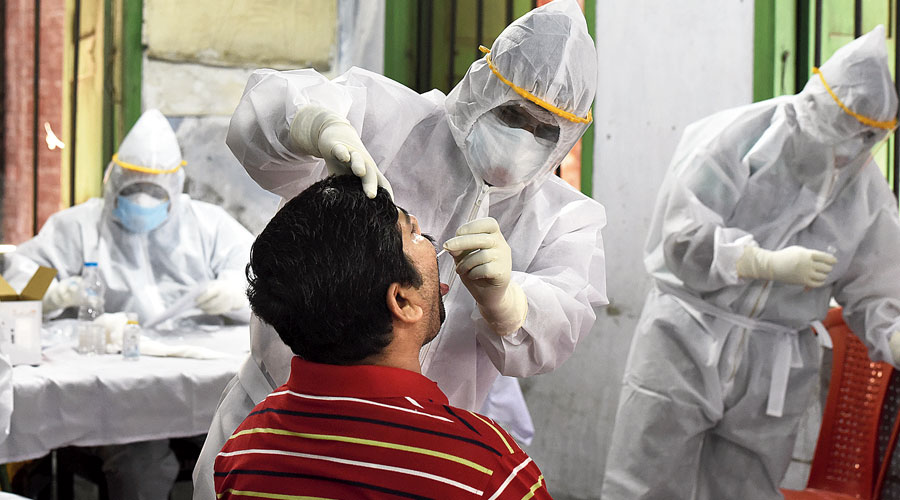A 13-year-old boy, who breathed through a tracheostomy tube for over 10 years, underwent a complicated but successful surgery at Sir Ganga Ram Hospital here.
As a toddler, Shrikant had suffered a head injury and had to be kept on a ventilator for a long time.
The long-term ventilation narrowed his windpipe. He then underwent a tracheostomy in which doctors inserted a tube into the windpipe by creating an opening in the neck.
Due to a long period of tracheostomy and a missing portion of the windpipe, there was no airway for him to breathe normally. The boy had neither spoken nor eaten normally for the last seven years, doctors at Sir Ganga Ram Hospital (SGRH) said.
"When I first saw the patient, I felt it was going to be a very complicated airway and voice box surgery. I had not seen anything like this in my 15 years of practice. The child had 100 per cent stenosis (blockage) of the cricoid and tracheal complex (air pipe)," said Dr Manish Munjal, Senior Consultant, ENT Department.
The hospital formed a panel of doctors from the departments of Thoracic Surgery, ENT, Paediatric Intensive Care and Anaesthesia to perform this rare and complex procedure.
Dr. Sabyasachi Bal, Chairperson, Department of Thoracic Surgery, said, "We decided to attempt complete 'Crico-tracheal resection' of the affected disease airway segment. This is a complicated and challenging surgery and there is a high risk of failure which sometimes may also lead to death. But the child did not have any other option and the same was explained to the family."
On April 23, the boy was wheeled inside the operation theatre. The team of doctors worked together for six and half hours.
"Since 4 cm of windpipe near the voice box was completely destroyed and non-recoverable, our first challenge was to reduce this gap by bringing the upper and lower segments of airway as close as possible. For this, 'Laryngeal Drop' procedure was performed to bring down the voice box from its normal position," Dr Munjal said.
"Simultaneously, the lower part of the windpipe was released from its surrounding attachment in the chest and pulled towards the voice box," Dr Bal added.
The most important and difficult part was to operate on the badly stenosed (blocked) cricoid bone. Located below the voice box, it is a horseshoe shaped bone which has minute nerves on both the sides and is responsible for voice and airway protection.
"We used a system of drills to widen the severely stenosed portion of cricoid bone. We had to be extra careful to preserve the very minute laryngeal nerves (voice nerves). Had these been damaged, the child's voice would have never come back," Dr. Munjal said.
Finally, re-fashioned segments of both upper and lower sides of the airway were brought together and joined.
The surgery was successful, but there were more challenges. The post-surgery management was very important, the doctors said.
According to Dr. Anil Sachdev, Director Paediatrics Intensive Care, Department of Paediatrics, Shrikant had a very high risk of airway leak into the chest wall, which could have been lethal. Therefore, he was kept in neck flexion (chin locked down towards the chest position) for three days.
"Also, he was kept on low-pressure oxygen support so that he did not develop any traumatic air leak. He was also kept in ICU for three days and the recovery was uneventful" the doctor said.
Shrikant has been discharged and is in a stable condition.











